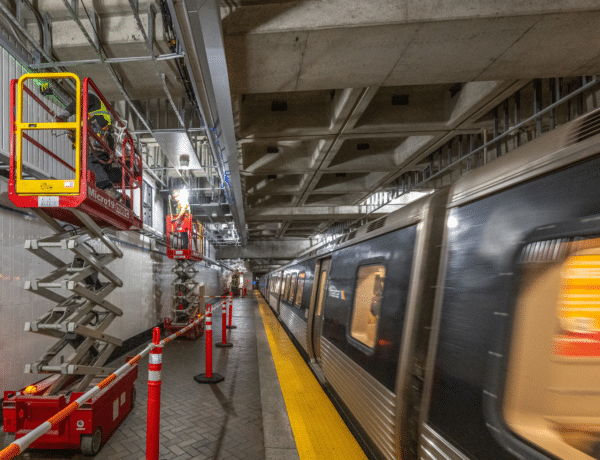Project Overview
Several areas of the existing building structure were also addressed in this project and modified to meet the current codes. Areas of damaged or missing spray applied fireproofing on the structural steel were patched to restore the integrity of the fire rating on the concourse. Existing walls in the concession spaces and electrical rooms were modified to meet the required fire separation rating. This was achieved by installing new framing and sheetrock to the deck above and installing firestopping at all penetrations in those walls.

Structural Upgrades
Several areas of the existing building structure were also addressed in this project and modified to meet the current codes. Areas of damaged or missing spray applied fireproofing on the structural steel were patched to restore the integrity of the fire rating on the concourse. Existing walls in the concession spaces and electrical rooms were modified to meet the required fire separation rating. This was achieved by installing new framing and sheetrock to the deck above and installing firestopping at all penetrations in those walls.
Ensuring Safety
The fire alarm system throughout the concourse was upgraded by installing a VESDA early smoke detection system. The VESDA head units, which were installed in the electrical rooms and integrated into the existing fire alarm system, take samples of the air throughout the concourse to detect smoke well in advance of the standard fire alarm smoke detectors. The air is pulled through tubing that was installed throughout the concourse and terminated at detector heads installed in the existing ceiling. This early smoke detection system was paired with a new mass notification system, which is a software-based system that integrates with existing digital signage as well as new digital signs installed in the project. This system can be used to advise passengers and employees throughout the concourse of the proper actions to be taken during an emergency.
Working Around Operations
The work performed on this project was all completed in an operational facility and required constant coordination to maintain emergency egress routes, airport security, and passenger safety during construction without unplanned disruptions to ongoing operations. Much of the work was performed at night to limit passenger disruptions. In coordination with the TSA and the Department of Aviation Security, temporary security doors were installed to allow demolition and replacement of existing doors while maintaining the security of the facility and aircraft. All work areas were cleaned and temporarily concealed at the end of each shift to provide a safe and clean environment for daily flight operations.







